METALWORKING
From 2015-2018 we conducted a series of small experimental archaeology projects at the Tell Atchana dig house focused on exploring methods of furnace construction and ore smelting using materials recovered from known ancient mines. These experiments have covered a variety of scales and a range of different materials, highlighting some of the numerous routes that can be taken to achieve more or less similar outcomes, with greatly differing degrees of resource and time investment. These experiments were an excellent informal opportunity to show students how some of what we were seeing in excavation could be reconstructed and experienced in a truly tactile fashion. While we typically tried to use technologies and concepts that are archaeologically attested, we also made frequent modifications based on the materials we had on-hand, such as our pot-bellows operated with a plastic bag.
The first of these was a relatively ambitious effort to reconstruct a furnace similar to those excavated at the 3rd millennium BC site of Arisman, located along the eastern margins of the Zagros Mountains in Iran. This site is notable for the large – some might say industrial – scale of copper production and the good degree of preservation of its furnaces and other pyrotechnical installations. It was not immediately clear if the original examples were driven by bellows or natural draft, but in our experiments we opted for a natural draft version. With an internal height of 1 meter to increase the force of the natural draft and the furnace placed to take advantage of the strong local wind patterns, sustained temperatures of 1200°F/649°C were easily attainable.
While we never had enough copper ore on hand to use the furnace in the manner it was originally intended, we were able to use it to conduct the first successful smelt of tin ore recovered from the Early Bronze Age tin mine of Hisarcık, near the modern city of Kayseri. In this case, we placed a loaded crucible into the primary reaction area of the furnace and left it for approximately 45 minutes. Where previous experiments with traditional crucible smelting and blowpipes had yielded largely negative results, we finally had a small, but indisputable yield.
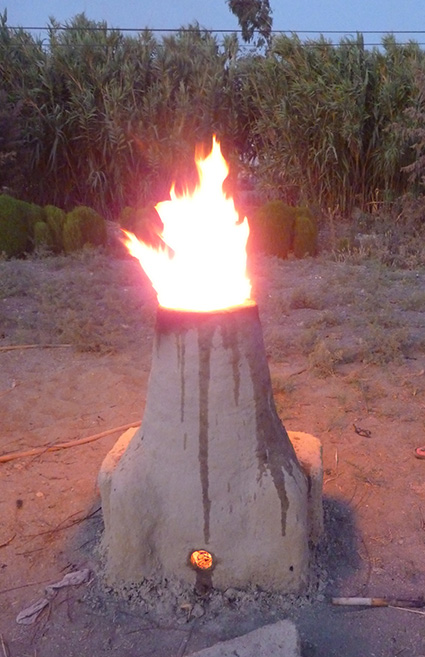
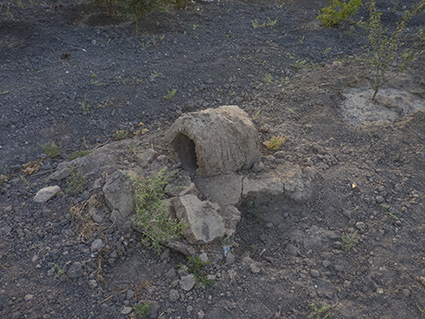
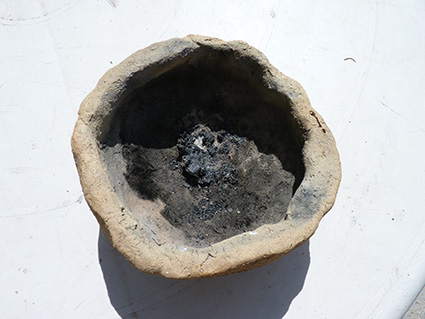
A small accretion of slag and tin metal at the bottom of a crucible. In this instance the crucible was packed with charcoal and ore and externally heated in the large furnace
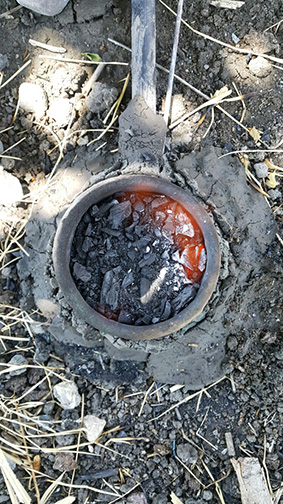
In 2016 and 2017, with access to a potters wheel from Mustafa Kemal University, we opted to try a much smaller scale type of furnace that was more in line with the amounts of raw material we had at our disposal. Though not archaeologically attested, we produced a small collar from locally sourced clays that could be situated on top of a crucible with a slot for a tuyère. This turned out to be the most effective pyrotechnical device we produced, with the capacity to easily sustain temperatures exceeding 1300°F/704°C while also surviving multiple uses. This is in contrast with our crucible smelting experiments where crucibles produced from local clays would retain structural integrity until several hours after their use, when they would completely disintegrate. The collar furnace was effective for producing co-smelted bronzes from malachite and the complex Hisarcık tin ores, as well as for producing tin metal from the same ores.
In 2018, the large furnace fell victim to one of the dig-house guard dogs, Mimi, who believed that a small animal was living underneath it. Though it was disappointing to see the furnace go, it has provided the opportunity to look at some of the taphonomic processes surrounding the disintegration of pyrotechnical installations. That same year, we recovered several tin-bearing hematite samples from the Early Bronze Age tin mine of Kestel in the Central Taurus. A hypothesis that had been proposed some years earlier suggested that perhaps this material was being roasted to make this otherwise intractable material easier to crush, after which the powder could be concentrated with a method similar to panning. To that end, we replicated a square furnace found in the Area 4 workshop and used it as a roasting hearth. While it had the desired effect of making the ore easier to crush, the overall effort was an abject failure, yielding essentially no useable cassiterite. This failure led us back to the mine in 2019 with a new methodology published in Powell et al. (2020), showing that the tin from Kestel was hosted in an entirely different variety of deposit than the remaining hematite.
These exploratory experiments have proven to be extremely informative from a practice perspective and have also been an excellent opportunity to make knowledge derived from archaeological excavations more accessible for students from a wide range of backgrounds. Perhaps more than anything, it has made us more aware of some of the exigencies and limitations of ancient technologies while also highlighting the creativity and ingenuity of those involved in metalworking in the ancient world. We hope that in years to come we will be able to restart some of these experimental efforts within a more formal context.
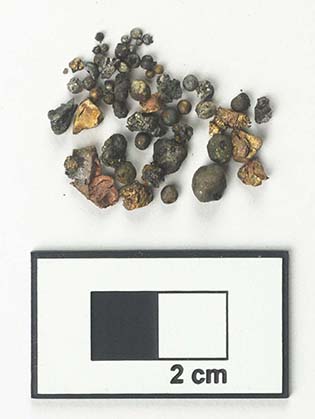
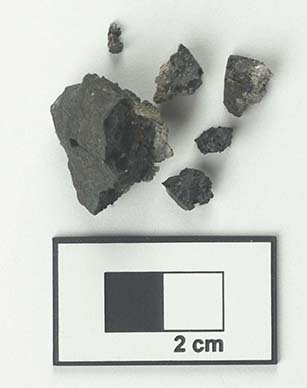
Powell, W., Yazgan, E., Johnson, M., Yener, K.A., Mathur, R., 2021. Mineralogical Analysis of the Kestel Mine: An Early Bronze Age Source of Tin Ore in the Taurus Mountains, Turkey. Minerals 11, 91. https://doi.org/10.3390/min11010091.


